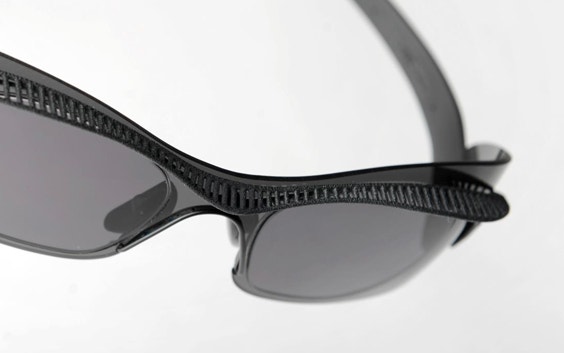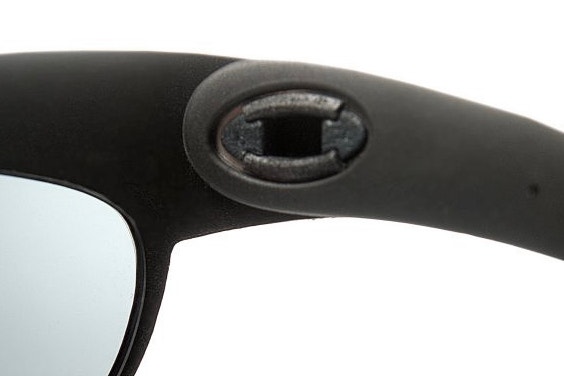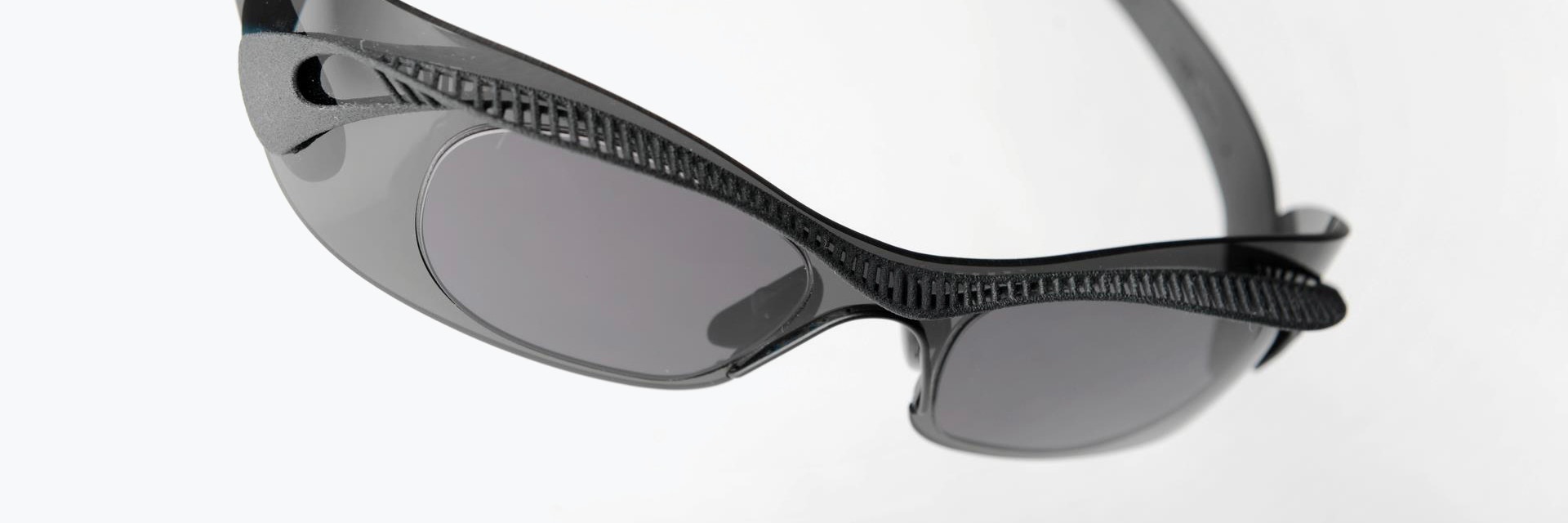CASE STUDY
The Cabriolet Evo B by Hoet Design Studio

For their Cabrio collection’s Cabriolet Evo B model, Hoet Design Studio turned to 3D printing to take their designs straight from paper to wearable eyewear without needing to sacrifice style or function for production purposes.
As a pioneer in eyewear design, Hoet Design Studio is constantly challenged to design solutions that create a better equilibrium between aesthetics, functionality, technology and economics.
For their Cabrio collection, they ran into design constraints that conventional technologies were unable to solve. Therefore Bieke Hoet, Founder of Hoet Design Studio, turned to Materialise to explore the possibilities of using 3D printing to overcome those limitations.
Enhancing functionality in small spaces
The challenge in producing its latest line of sunglasses was to combine functionality and esthetics in extremely small geometries and with tight tolerances. Tackling first the issue of functionality, the initial project was to design the connection between the frame’s temple arms and its lenses.
“Since 3D printing offers a great deal of flexibility […], we had the freedom to design what we drew on paper, without modifying it in production.”
— Bieke Hoet, Founder of Hoet Design Studio
After much collaboration, a new snap fit was designed to clip the arms directly to the lenses.
“When designing eyewear you’re working in small spaces so it’s always a challenge to create lightweight components that are strong and functional,” says Bieke Hoet, Founder of Hoet Design Studio.
Thanks to the huge degree of design freedom in 3D printing eyewear, Materialise designed clips which can be easily opened and closed, thereby performing better than their injection molded predecessors.


After testing the first 3D-printed prototypes of the clips and seeing how well it worked, Hoet Design Studio was convinced it had chosen the right manufacturing path. Building further on the concept, they started designing eyecatchers, accessories that can be fitted onto the clips to achieve different looks.
Design freedom: from paper to production
Once solving the problem of functionality, the team turned their attention to enhancing the aesthetics.
“Since 3D printing offers a great deal of flexibility to create unusual and intricate shapes, we had the freedom to design what we drew on paper, without modifying it in production. That’s why the design started from lines rather than surfaces. The result is a curved open structure that no other technology would have been able to produce,” explains Bieke.


The cooperation between Materialise and Hoet Design Studio led to the Cabriolet Evo B, a pair of sunglasses that offers users a close and comfortable fit with a distinct, cutting-edge shape.
“3D printing has allowed us to achieve our designs extremely quickly. Rather than going through the many steps required in traditional manufacturing, we can immediately print shapes we have designed on paper; this has cut our process for research,” adds Bieke.
“Now that we know the design possibilities of additive manufacturing, ideas for following projects in 3D printing are already on our drawing table.”
Share on:
This case study in a few words
Eyewear
3D printing
Design freedom
Product innovation
